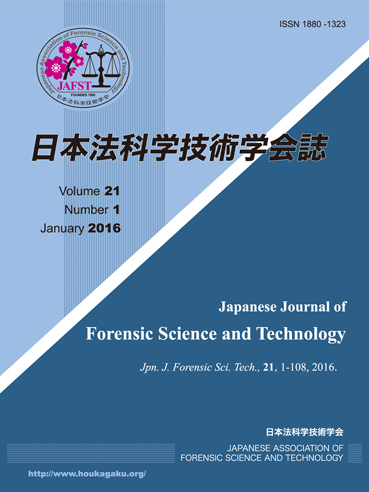21 巻, 1 号
選択された号の論文の9件中1~9を表示しています
- |<
- <
- 1
- >
- >|
原著
-
2016 年 21 巻 1 号 p. 1-23
発行日: 2016年
公開日: 2016/01/23
[早期公開] 公開日: 2015/11/27PDF形式でダウンロード (1084K) -
2016 年 21 巻 1 号 p. 25-33
発行日: 2016年
公開日: 2016/01/23
[早期公開] 公開日: 2015/12/18PDF形式でダウンロード (387K) -
2016 年 21 巻 1 号 p. 35-45
発行日: 2016年
公開日: 2016/01/23
[早期公開] 公開日: 2015/12/11PDF形式でダウンロード (1068K)
技術報告
-
2016 年 21 巻 1 号 p. 47-56
発行日: 2016年
公開日: 2016/01/23
[早期公開] 公開日: 2015/08/12PDF形式でダウンロード (451K) -
2016 年 21 巻 1 号 p. 57-65
発行日: 2016年
公開日: 2016/01/23
[早期公開] 公開日: 2015/08/26PDF形式でダウンロード (489K) -
2016 年 21 巻 1 号 p. 67-73
発行日: 2016年
公開日: 2016/01/23
[早期公開] 公開日: 2015/08/26PDF形式でダウンロード (447K) -
2016 年 21 巻 1 号 p. 75-85
発行日: 2016年
公開日: 2016/01/23
[早期公開] 公開日: 2015/09/30PDF形式でダウンロード (618K) -
2016 年 21 巻 1 号 p. 87-94
発行日: 2016年
公開日: 2016/01/23
[早期公開] 公開日: 2015/11/27PDF形式でダウンロード (419K) -
2016 年 21 巻 1 号 p. 95-108
発行日: 2016年
公開日: 2016/01/23
[早期公開] 公開日: 2016/01/14PDF形式でダウンロード (770K)
- |<
- <
- 1
- >
- >|
